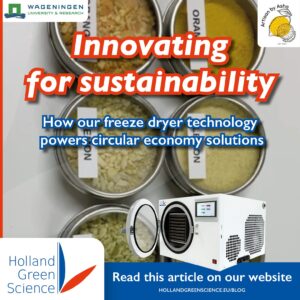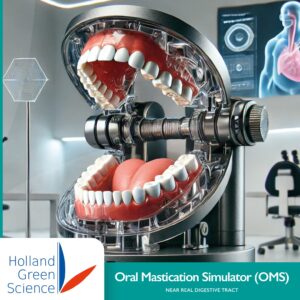
Moisture analysis plays a crucial role in determining the quality, longevity and regulatory compliance of products within different industries. In this blog post, we will take an analytical look at moisture analysers – exploring their essential elements, types and uses as well as offering key tips for picking out the right one for your particular industry.
So let’s dive deep into the mysterious world of moisture analyzer analysis to make sure you are selecting accurately!
Short Summary
- Moisture analysers are essential for quality control and regulatory compliance in food, pharmaceuticals, plastics & chemicals industries.
- Different types of moisture analysers provide various benefits depending on industry needs and sample types.
- Regular calibration & maintenance is necessary to ensure accurate results from a moisture analyzer.
Understanding Moisture Analysis

Accurately determining moisture content is essential in various industries, such as food, pharmaceuticals, plastics, and chemicals. To conduct the moisture analysis, properly, it relies on a technique called Loss On Drying (LOD), which involves drying samples using heat from halogen lamps or other infrared radiators while continuously monitoring weight. These measurements must be taken for quality control purposes to maintain shelf life and regulatory compliance of products with desired moisture levels. Hence why researchers use modern-day ‘Moisture Analysers’ or balances that come integrated with dual temperature calibration tests ensuring reliable results at all times. Moisture analysers are also used by organizations and government agencies who want accurate measurement performance and user-friendly and easy operation. This process helps verify the proper functioning of bulk dryers via precise steps guiding users through each step without compromising any detail when assessing sample loss due to drying with heat/weight change provided.
Importance of Moisture Content
Moisture content is a significant factor in many industries, making moisture analysers essential for quality control and compliance. Standard or rapid drying methods with a halogen lamp or heating can ensure consistent production processes and top-notch products are achieved in the food industry when utilizing such devices. These tools allow manufacturers to measure small sample moisture levels rapidly during processing stages so as to satisfy the regulatory demands of different markets. Such accuracy helps boost efficiency while decreasing manufacturing costs throughout all kinds of businesses that rely on accurate measurement capabilities from precision instruments like moisture analysers.
LOD method moisture analyser
Moisture analysers take advantage of the LOD method, which involves determining the starting weight of a sample prior to heating and drying it via halogen lamps or another type of infrared radiator. As moisture is being removed from the sample, its weight gets measured in order to calculate how much humidity there was initially present. This technique has proven itself efficient thanks to its accuracy, speediness, and affordability for many industries around that might need it as an option. It’s suitable due to these factors alone, making this approach popular when dealing with samples containing high levels of moisture content.
Industries that Rely on Moisture Analysis
Moisture analysis is a critical element of many industries, such as food, pharmaceuticals, plastics, and chemicals. This type of research and analysis guarantees quality products while optimizing production processes.
An example is the our moister analyzer is using a high sensitive censer witch allows faster drying times resulting in cost savings on labor investments plus significant improvement in overall efficiency within these types of industries where accurate measurement result storage and analysis are essential for success.
Moisture Analyser

The Ygrasia Halogen Moisture Analyzer, which can be used for quality control in research labs and daily production processes. The Ygrasia 100 and Ygrasia 110 models allow exact analyses to ensure that every sample meets all regulatory standards concerning moisture levels. To better understand how these instruments work, we will now have a look at their characteristics more closely.
Halogen Moisture Analyzer

Moisture analysis is essential in many industries, and reliable moisture analysers are needed to ensure the desired level of moisture content. Halogen heating increases efficiency when it comes to taking accurate measurements. The popular Holland Green Science Ygrasia 100 utilizes halogen heating techniques for rapid and reliable results in measuring moisture of the sample. By using a good quality moisture analyzer product, you can get precise readings with minimal effort while ensuring end products meet the highest standards of quality control. Heating technology in these devices offers fast response times, making them an excellent choice for various applications dealing with different levels of humidity measurement requirements from multiple industries.
Key Components of a Moisture Analyser
For precise and trustworthy moisture analysis, it is essential to understand the major components of a moisture analyzer. This includes weighing instruments such as the balance unit that calculates samples pre- and post-moisture removal, a heating unit for removing moisture through different heat technologies, plus temperature calibration which is vital in achieving accurate outcomes from moisture testing. All these are extremely important factors when assessing wetness levels accurately and dependably by means of an a moisture analyser, specifically designed for this purpose.

Balance Unit
A moisture balance, or more commonly known as a moisture analyzer, is instrumental in ensuring precise measurements of moisture contained the sample’s weight before and after it has undergone dehydration. This comparison yields accurate results that are used to determine the amount of water held by said sample, which is then referred to as its ‘moisture content’. Moisture testing plays an important role throughout this process. Determining moisture levels not only aids in gauging appropriate outcomes but also serves other essential purposes like enabling cost-effectiveness during production processes et cetera.
Heating Unit
The heating unit in moisture analysers ensures accurate results for measuring the content of moisture, through using halogen lamps and other infrared radiators. This device provides reliable data with speed and precision to ensure that users can obtain their desired results quickly without sacrificing accuracy.
Temperature Calibration
It is essential to properly calibrate temperature when conducting moisture analysis, as it ensures that results are accurate. Regular calibration of both the weighing and temperature features of the moisture analyzer is necessary in order to maintain precision readings from measurements while engendering trust in this system. This procedure should be done on an annual basis or more often if required by certain conditions during testing with a moisture analyzer. Maintaining these standards will ensure accuracy for both weight and measured temperatures used within moisure assays.
Selecting the Right Moisture Analyser
When making a selection for the most appropriate moisture analyzer, it is necessary to take into consideration factors such as those required by your specific industry and application, types of samples being tested and budget constraints. To assist in the process of deciding which one is right for you, we shall now provide more information about these areas.
Industry-Specific Requirements
Different industries have specific needs when it comes to moisture analysers, depending on their testing standards and regulations. For instance, the food industry requires an instrument that can measure moisture levels in foods while the pharmaceutical sector demands one capable of identifying humidity content in medicines.
When selecting a suitable device for your application, you should take into account these particular requirements of various sectors as they are key elements for success with any type of product involving moisture measurement such as food or drugs.
Sample Types and Testing Procedures
When choosing a moisture analyzer, it is essential to take into consideration the size, form and composition of the sample as well as desired accuracy of results. The testing techniques the Ygrasia gravimetric.
The Ygrasia is not mend to test heat sensitive samples, like protean and antibody. For samples of biomass, food or food powders the Ygrasia is perfect.
Budget Considerations
When deciding which moisture analyzer to purchase, it is essential to take into account the cost of both the device itself and any add-ons or other necessities that may be required. It’s important to think about maintenance costs as well as calibrations over time, these expenses could have a major impact on what kind of value you get from your new equipment.
It’s key when selecting an appropriate moisture meter for all of one’s needs that there should be equal consideration placed on performance levels with overall expenditure.
Moisture Analyser Best Practices

In order to attain reliable measurements, it is essential to follow the best practices for using moisture analysers. This includes calibration, upkeep and data collection processes that will be highlighted in this section. We shall provide insight on how exactly one should properly calibrate their moisture analyzer products as well as maintain them. There are directives regarding acquiring accurate data points which must also be adhered too if we expect reliable results when measuring levels of humidity or dryness i.e., any kind of moisture analysers reading. Lastly, records have a great importance. Strategies need to be implemented so not critical information goes overlooked during record-keeping procedures associated with these analyses involving diagnostics.
Calibration and Maintenance
It is important to establish a routine program of calibration and maintenance for moisture analysers in order to guarantee their accuracy. Following the manufacturer’s instructions carefully will help ensure that measurements taken from these devices are reliable. Keeping accurate data records as well will Support correct readings when measuring both temperature and moisture levels. Regularly verifying such elements allows confidence in the system’s readouts while also assuring success with future tests.
Data Acquisition and Record Keeping
Accurate data collection and record keeping are essential for moisture analysis. To attach a moisture analyzer to a computer, you need software that produces graphs of results versus time which can provide insight into the speed of the drying process or verify dry weight consistency. An RS-232 port could be used to print out information such as initial mass value, residual mass value, test parameters and more – ensuring accuracy when operating your moisture analyzer is possible with good documentation practices.
Exploring Applications of Moisture Analysers Across Industries
Moisture analysers, like the Ygrasia 100 by Holland Green Science, are versatile tools with diverse applications across various sectors. From maintaining quality standards in the food industry to ensuring regulatory compliance in pharmaceuticals, moisture analysers are critical to accurate moisture determination. This article presents several case studies to illustrate the value these moisture analyser products bring to all sectors that use them.
In the Food Industry
In the food sector, moisture analysers play an essential role in maintaining product quality, extending shelf life, and adhering to industry regulations. These instruments measure the moisture content of raw materials precisely, informing quality control decisions and predicting how humidity levels might affect the taste, texture, appearance, form, or weight of products. By implementing moisture analyser products like the Ygrasia 100, with its bright backlit LCD display and robust and compact design, producers can preserve the integrity of their products and extend their shelf life. This not only benefits manufacturers but also consumers.
In the Pharmaceutical Industry
Moisture analysers are crucial in the pharmaceutical industry, primarily for quality control and regulatory compliance. They’re used to assess moisture levels in the raw materials used for medicine production, as well as pretreat samples to avoid excessive humidity. The Ygrasia 100 moisture analyser, with its rapid drying program and accurate moisture determination method, ensures that products meet the required standards, guaranteeing that consumers receive top-quality medication.
In the Plastic Industry
In the plastic industry, moisture analysers assess the moisture content in polyamides and ABS for reliable drying processes. By leveraging moisture analysers, manufacturers improve product quality control and streamline production efforts. For example, the Ygrasia 100 moisture analyzer, with its precise temperature range and real-time drying curve display, enables businesses to achieve consistently high-quality end products.
Deep Dive into the Ygrasia 100 by Holland Green Science
The Ygrasia 100 moisture analyser embodies precise, rapid, and reliable technology for advanced moisture content analysis. This high-quality moisture analyser, with its robust halogen heating system and exceptional standard and rapid drying capabilities, is a quintessential solution for industries like food production, pharmaceuticals, and plastic manufacturing that require accurate moisture analysis.
The Ygrasia 100 moisture analyser provides accurate moisture content measurements and stands out for its low maintenance requirements, rendering it a cost-effective choice among other moisture analysers. With an operating temperature ranging from 40°C to 199°C and an moisture range of 0.00% to 100.00%, it offers a moisture accuracy of 0.01%, ensuring utmost reliability in the moisture determination process.
As a moisture analyser, the Ygrasia 100 outperforms typical the moisture analyzing machines in terms of precision, making it an ideal tool for tasks that require accurate moisture balance readings. This moisture analyser, with its ease-of-use and ability to accurately measure even trace amounts of moisture contained in samples, is an ideal choice for addressing the daily operational challenges of various moisture balances.
The Ygrasia 100 moisture analyzer consists of a halogen heating light and a balance unit, adding to its versatility as a moisture analyzer product. The result is a moisture analyzer that is a testament to Holland Green Science’s commitment to superior moisture analyser products. This moisture analyser, with its halogen heating and reliable moisture balance, remains unrivaled in the field of moisture analysis.
Summary
Moisture analysis using moisture analysers is a critical tool for achieving shelf life, quality control, and regulatory compliance in many industries. By understanding the components, practices, and varieties of moisture analysers, you can select the most suitable option for your industry and application. Whether it’s a food manufacturer aiming to ensure product excellence or a pharmaceutical producer requiring exacting standards, these tests play a crucial role in enhancing productivity levels in various fields related to humidity, such as plastics, food processing, and technology.

Frequently Asked Questions
How accurate is a moisture Analyser?
It is possible to measure the moisture content of materials with a high degree of accuracy when using top-quality instruments. In this case, it could detect even minor variances in moisture up to 0.01% by weight.
What does a moisture analyzer do?
An instrument known as a moisture analyzer can ascertain the amount of moisture contained in a sample by weighing and then heating it. Through this process, the level of dampness present within water molecules in any given sample can effectively be determined.
What is the difference between moisture meter and moisture analyzer?
A moisture meter you can only measure the humidity a certain moment, moister analyzer is to process a product and measure what the moisture in the sample is or was.
How does a moisture analysis process work?
Moisture content content can greatly influence the quality, shelf life, and usability of many products. Thus, accurately determining moisture measurements are crucial. One of the most effective tools for this task is a moisture analyzer with a halogen heating unit. Here’s how it works:
– Sample Preparation: Begin by taking a representative sample of the material you wish to analyze. This ensures that the results are consistent and accurate.
– Placement: Place the sample on the device’s weighing pan. It’s essential to distribute it evenly to ensure uniform heating.
– Setting Parameters: Depending on the material being tested, set the appropriate temperature and time. The halogen heating unit provides rapid and uniform heating, ensuring precise moisture determination.
– Analysis: Once activated, the device will heat the sample, causing the moisture within to evaporate. The halogen unit ensures quick and even heating, leading to faster results.
– Result Interpretation: After the heating process, the device will measure the weight difference, which corresponds to the moisture content. The results are then displayed, giving you a clear understanding of the moisture level in your sample.
What are the main types of moisture analysers?
Moisture analysers are a type of measurement tool used to gauge and determine the amount of moisture in a sample quickly and precisely. There use halogen for heating the sample to giving an accurate assessment regarding the water content present.














